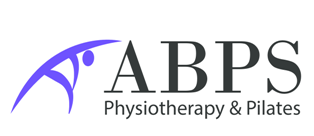What is Non-specific Low Back Pain (LBP)?
Non-specific LBP is pain not attributed to a specific pathology. LBP is a very common complaint with nearly 4 in 5 having at least one episode some time in their life.
What is Sciatica?
Sciatica refers to pain, tingling sensation and possibly numbness which is felt in the areas distributed by the sciatic nerve. These areas include buttocks, back of thigh, calf and foot.
What are the causes of LBP and Sciatica?
Although LBP can often be quite severe and debilitating, most of the times it is not due to any serious disease. The spine is very complex and apart from being a firm column, which supports our upright posture, it also allows lots of movement. The spinal column houses the spinal cord from which nerves supplying muscles, skin and organs exit through opening in the spine.
Ligaments, muscles and discs hold the vertebral bodies together; all of which could be a source of LBP. Swelling and chemicals from inflammation may cause irritation to sciatic nerve with symptoms radiating down the leg. The sciatic nerve passes next to and in between muscles, which if tight, could become areas of entrapment. With so many different causes of LPB and Sciatica a good examination is crucial in detecting and appropriately addressing the problem. 
Management of LBP and Sciatica
An initial period of rest is acceptable but a prolonged period of complete inactivity is not recommended. Pain relief medication like paracetamol is often helpful in allowing the person to move more freely. Non-steroidal anti-inflammatory drugs (NSAID’s) like iboprofen is also commonly used to reduce inflammation. Consult with your GP regarding best course of medication since there might be contraindications to NSAID’s depending on your medical history.
Physiotherapy in the form of manual therapy and structured rehabilitation has been shown to be the most successful form of conservative treatment. Dry needling/Acupuncture is often used to help with the management of pain, which facilitates early mobilisation.
Occasionally, a specialist administers facet joint steroid injections, guided by radiological imagery. This gives a window of opportunity when the pain often decreases considerably and rehabilitation can be stepped up. Surgery is rarely required and this is usually considered after conservative treatment has failed.
Further Reading: NICE Guidelines
Disclaimer The Author provides the Site and the services, information, content and/or data (collectively, “Information”) contained therein for informational purposes only. The Author does not provide any medical advice on the Site, and the Information should not be so construed or used. Using, accessing and/or browsing the Site and/or providing personal or medical information to the Author does not create a physician-patient relationship between you and the Author. Nothing contained in the Site is intended to create a physician-patient relationship, to replace the services of a licensed, trained physician or health professional or to be a substitute for medical advice of a physician or trained health professional licensed in your state. You should not rely on anything contained in the Site, and you should consult a physician licensed in your state in all matters relating to your health. You hereby agree that you shall not make any health or medical related decision based in whole or in part on anything contained in the Site.
